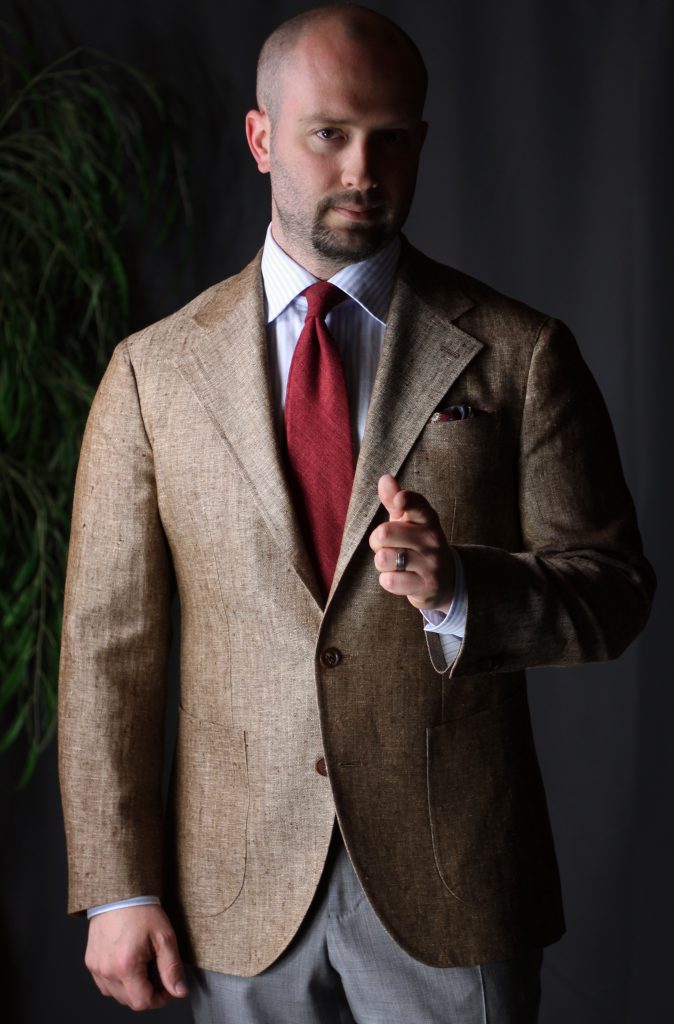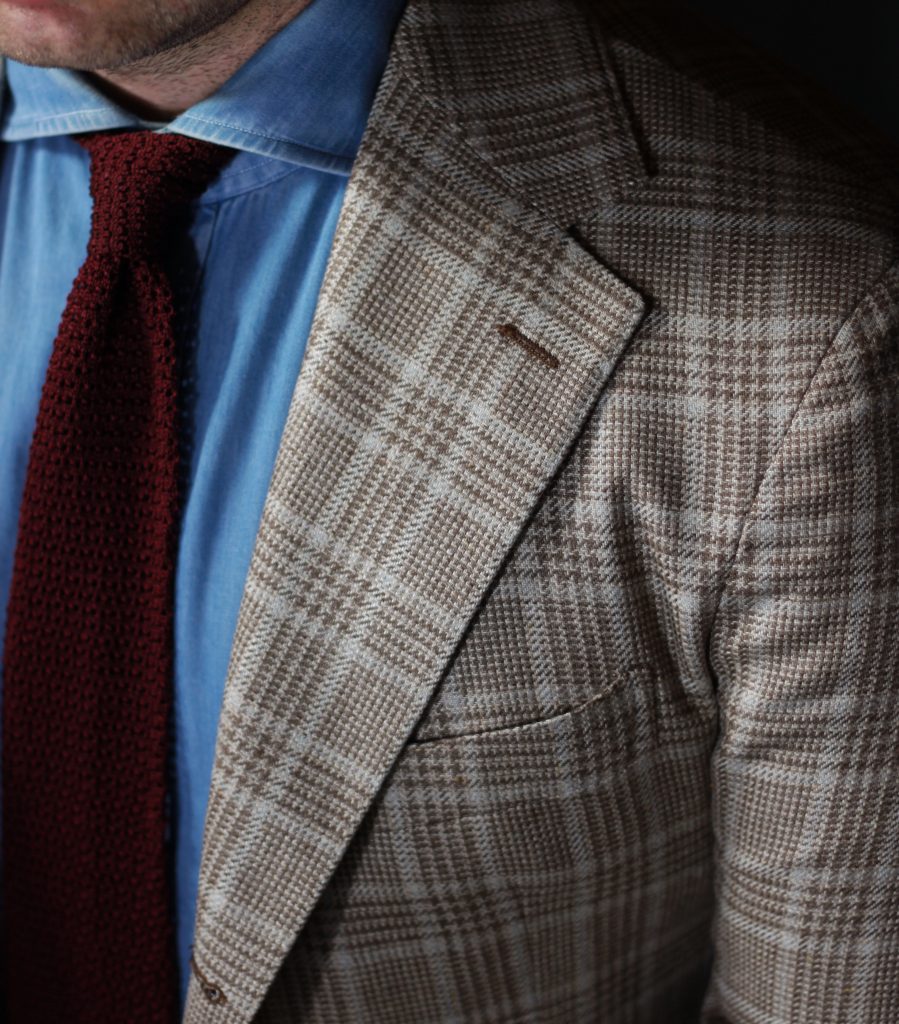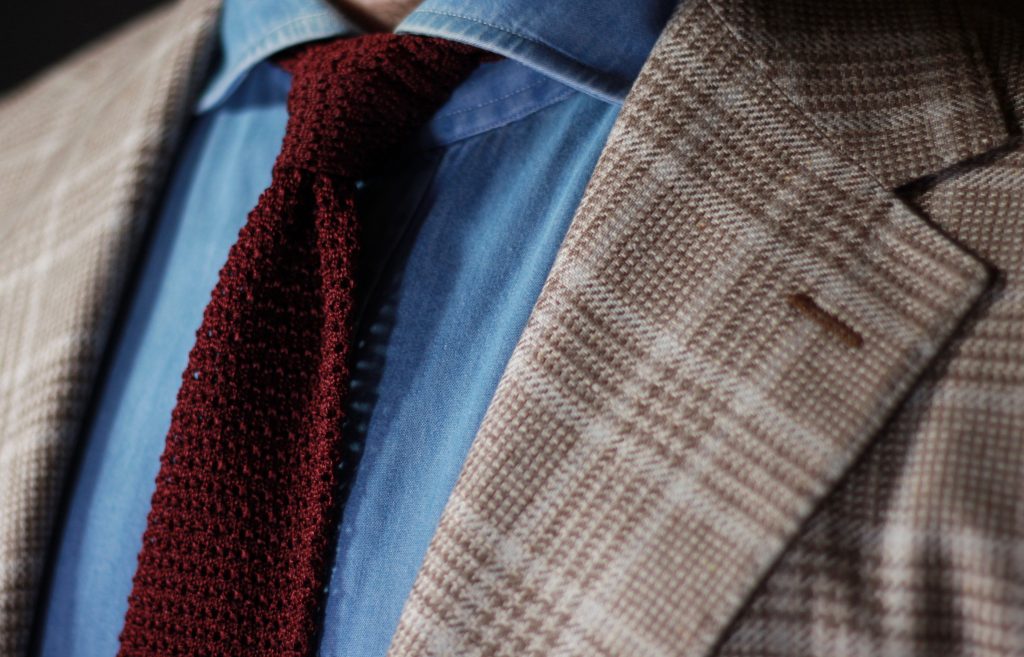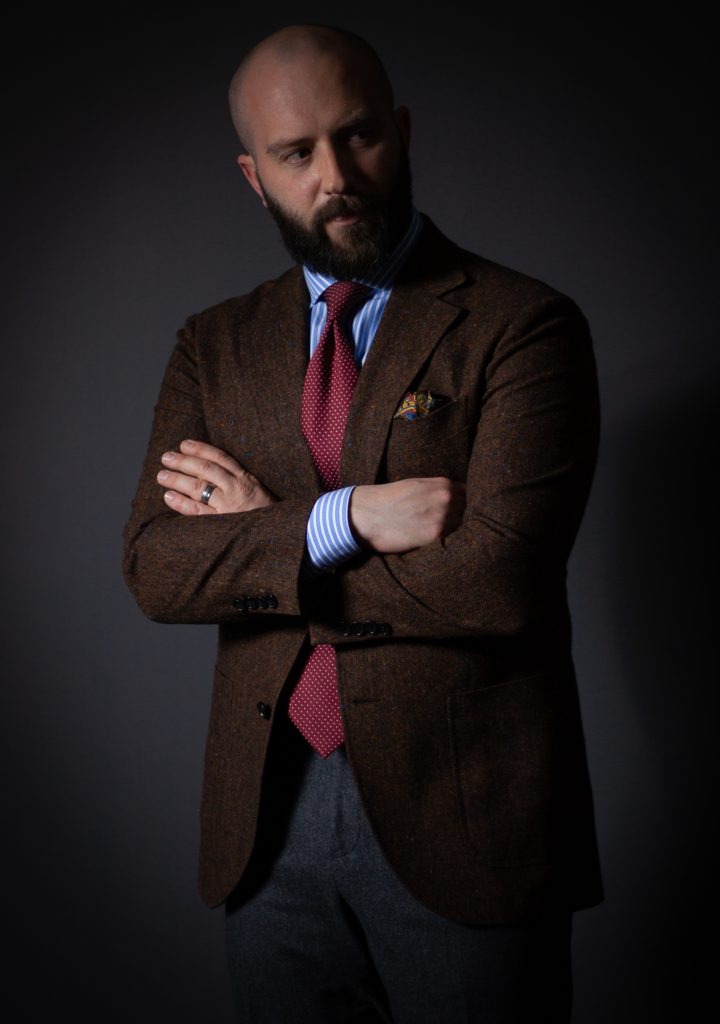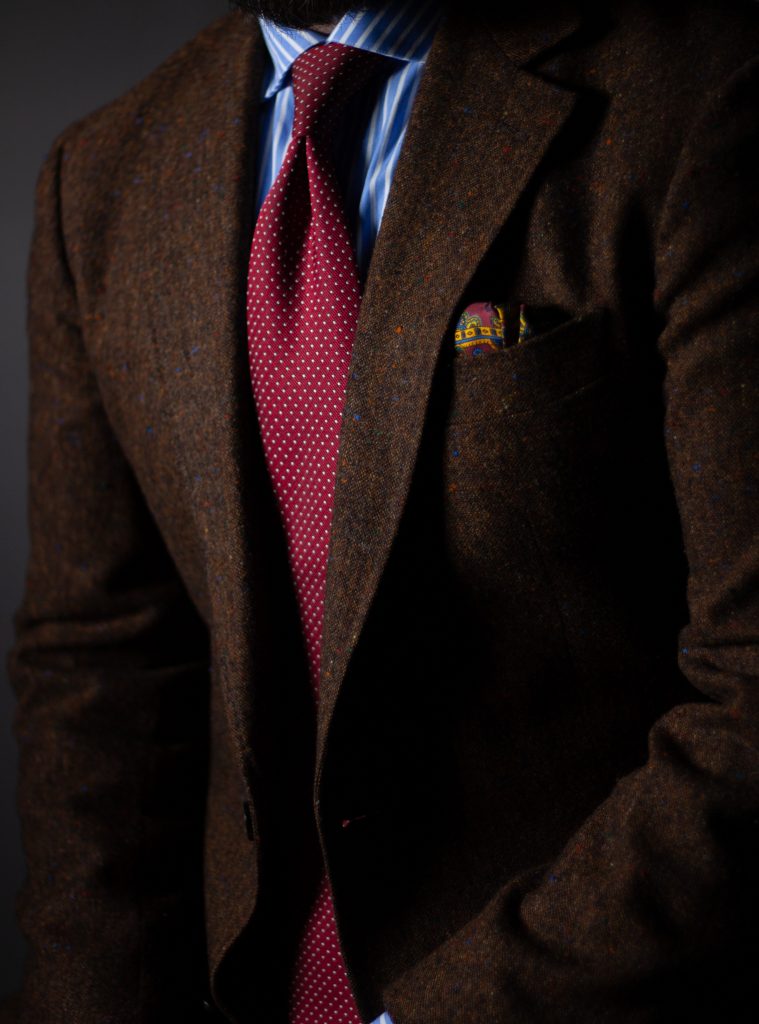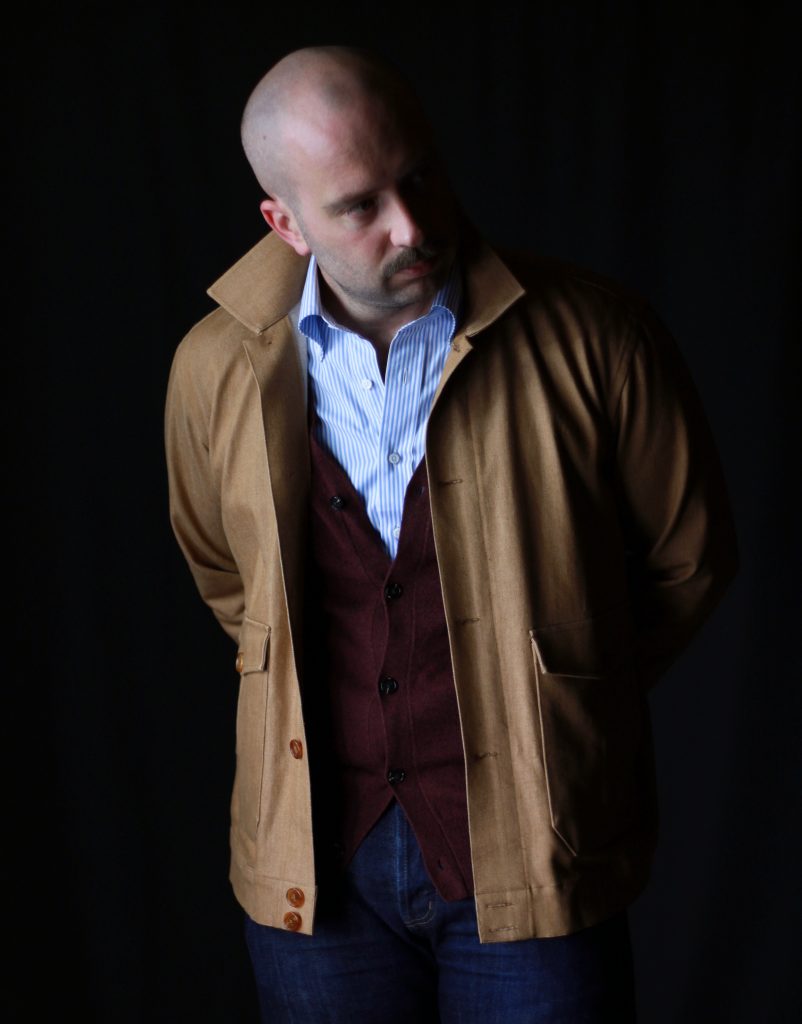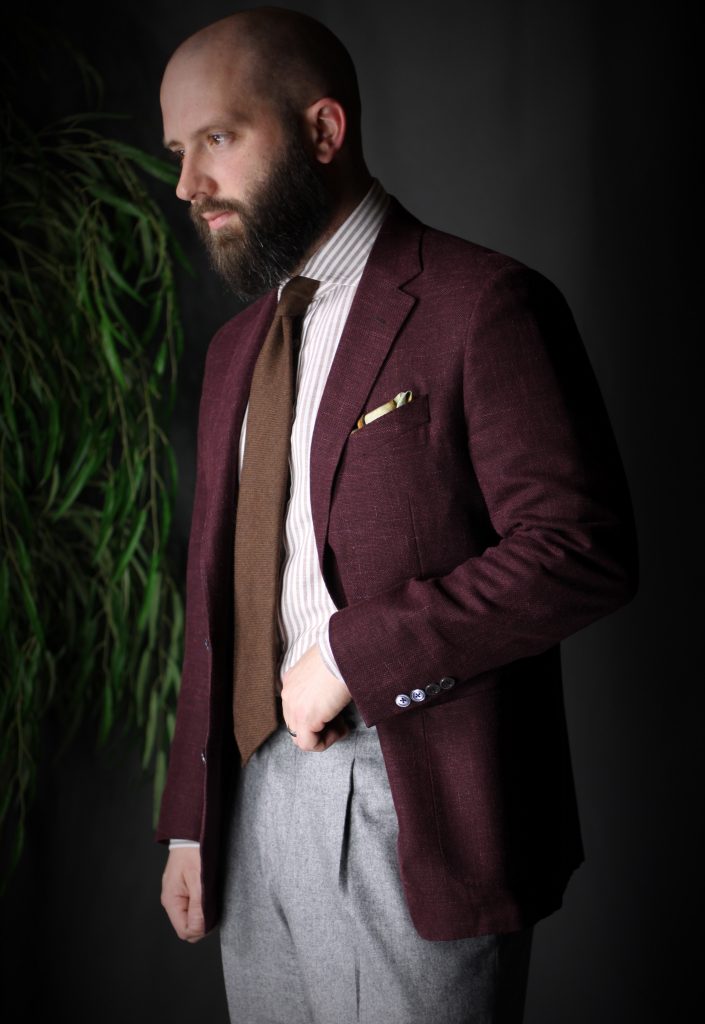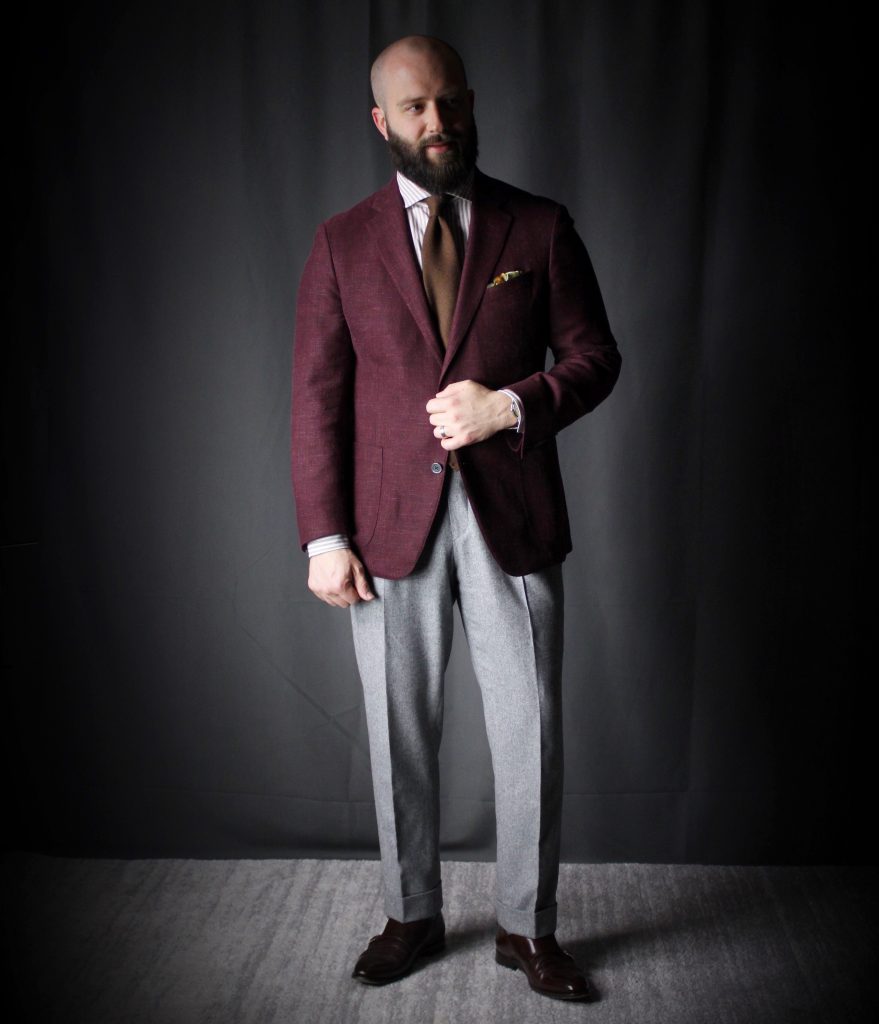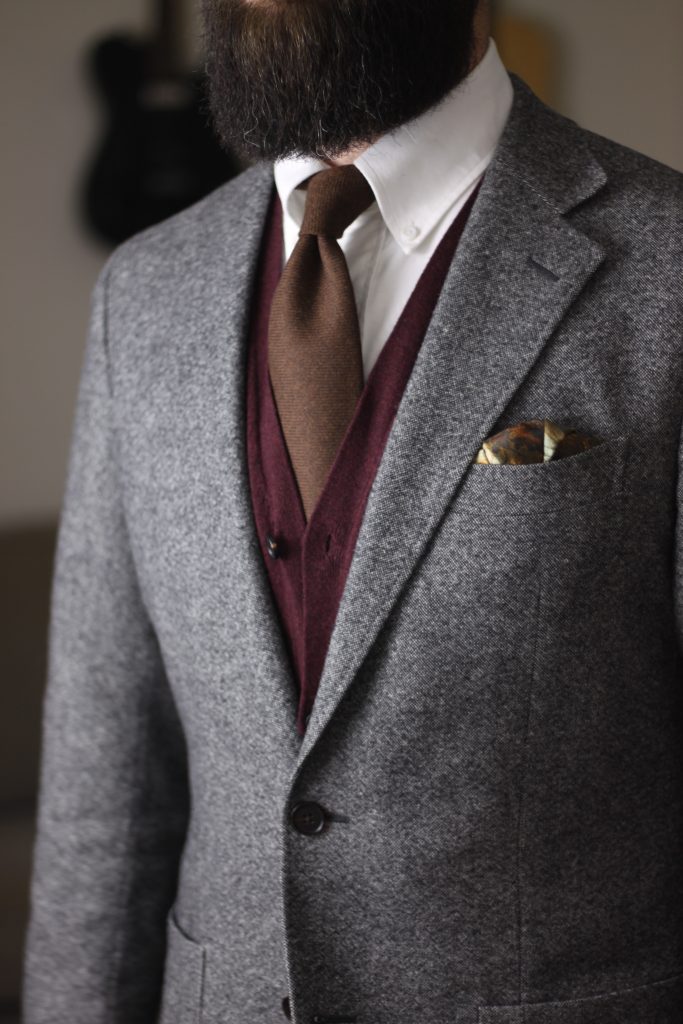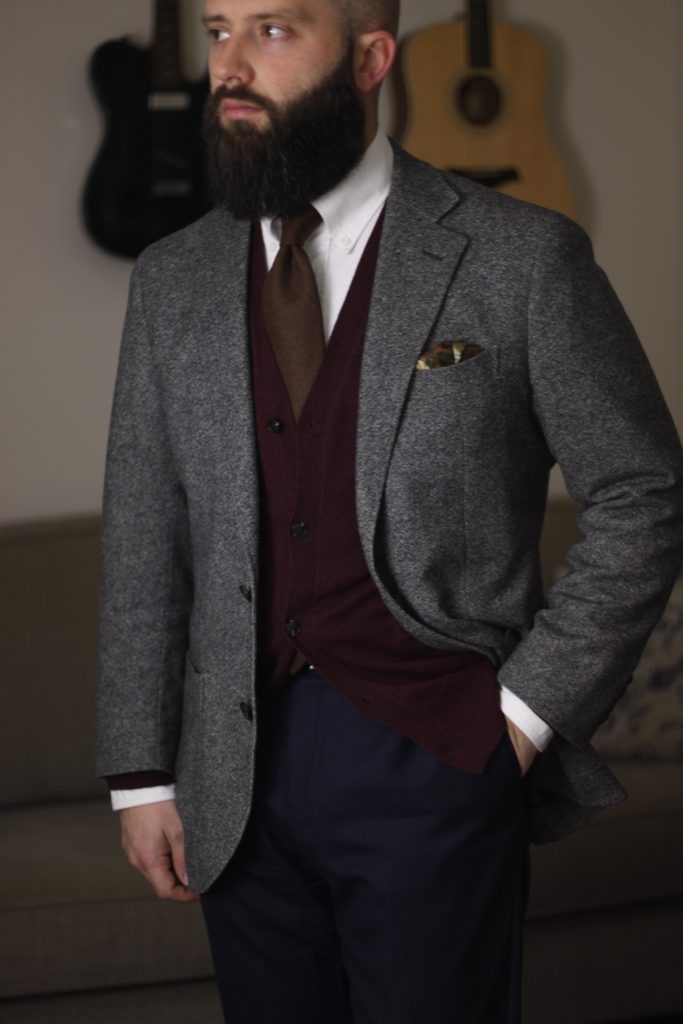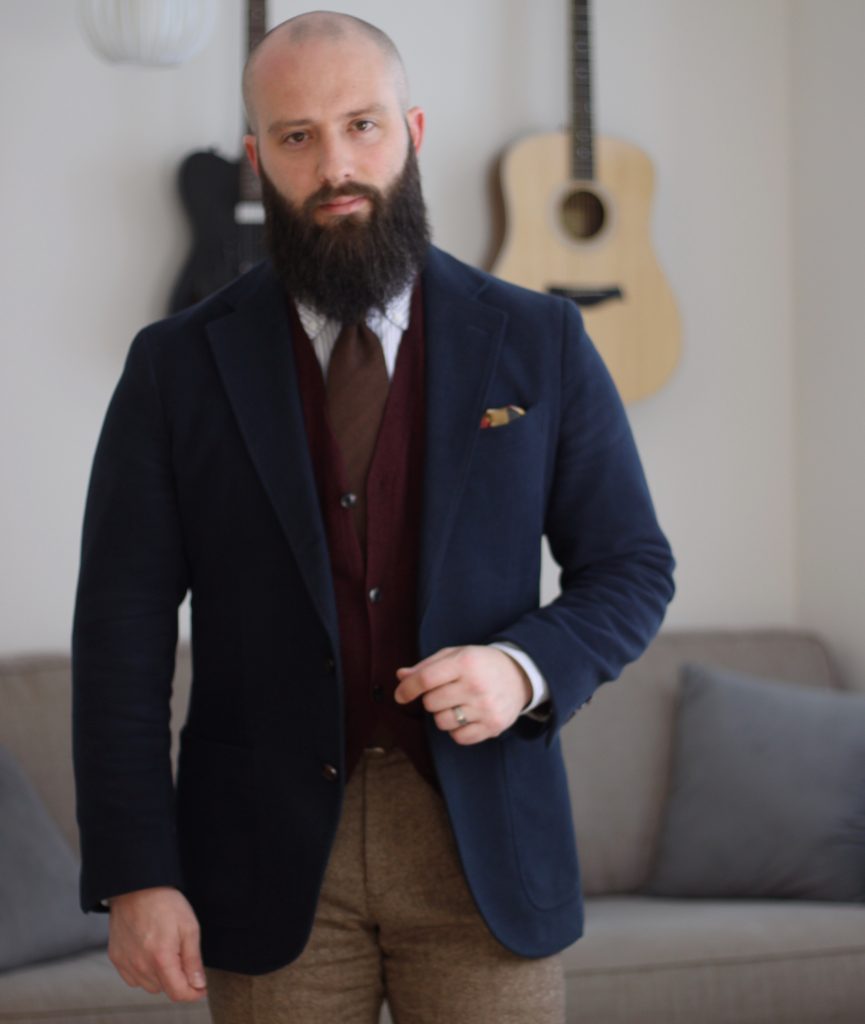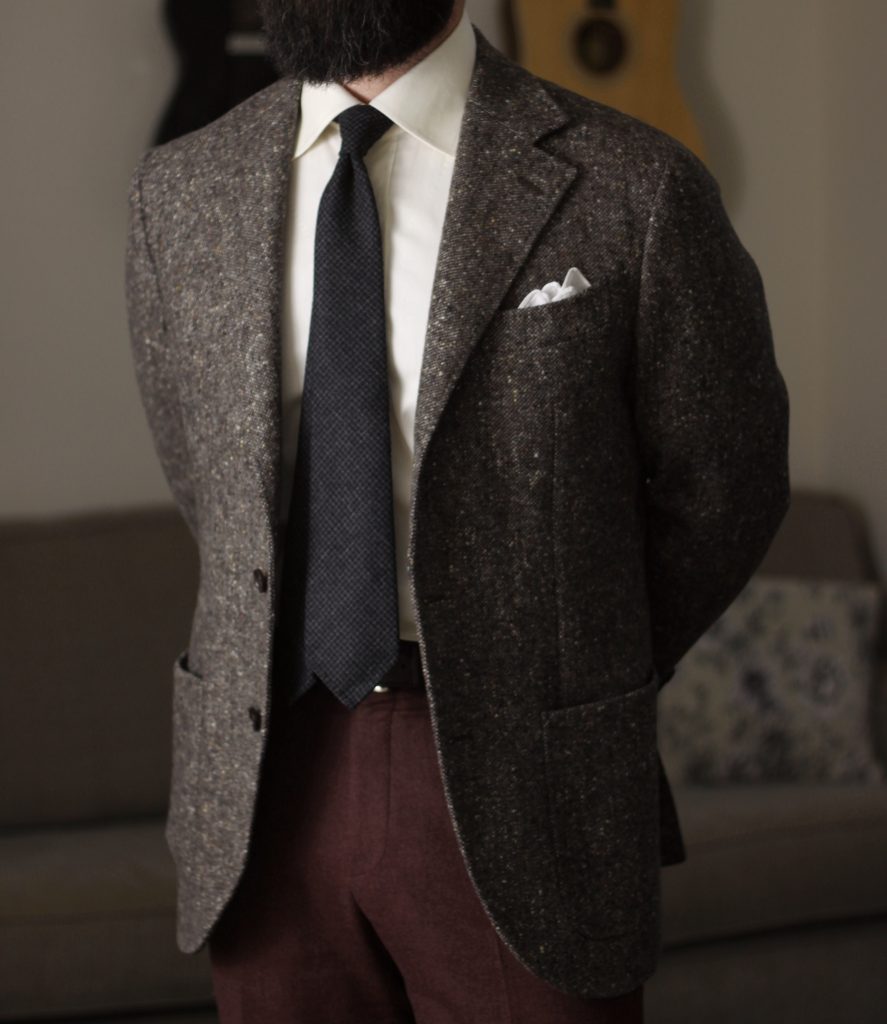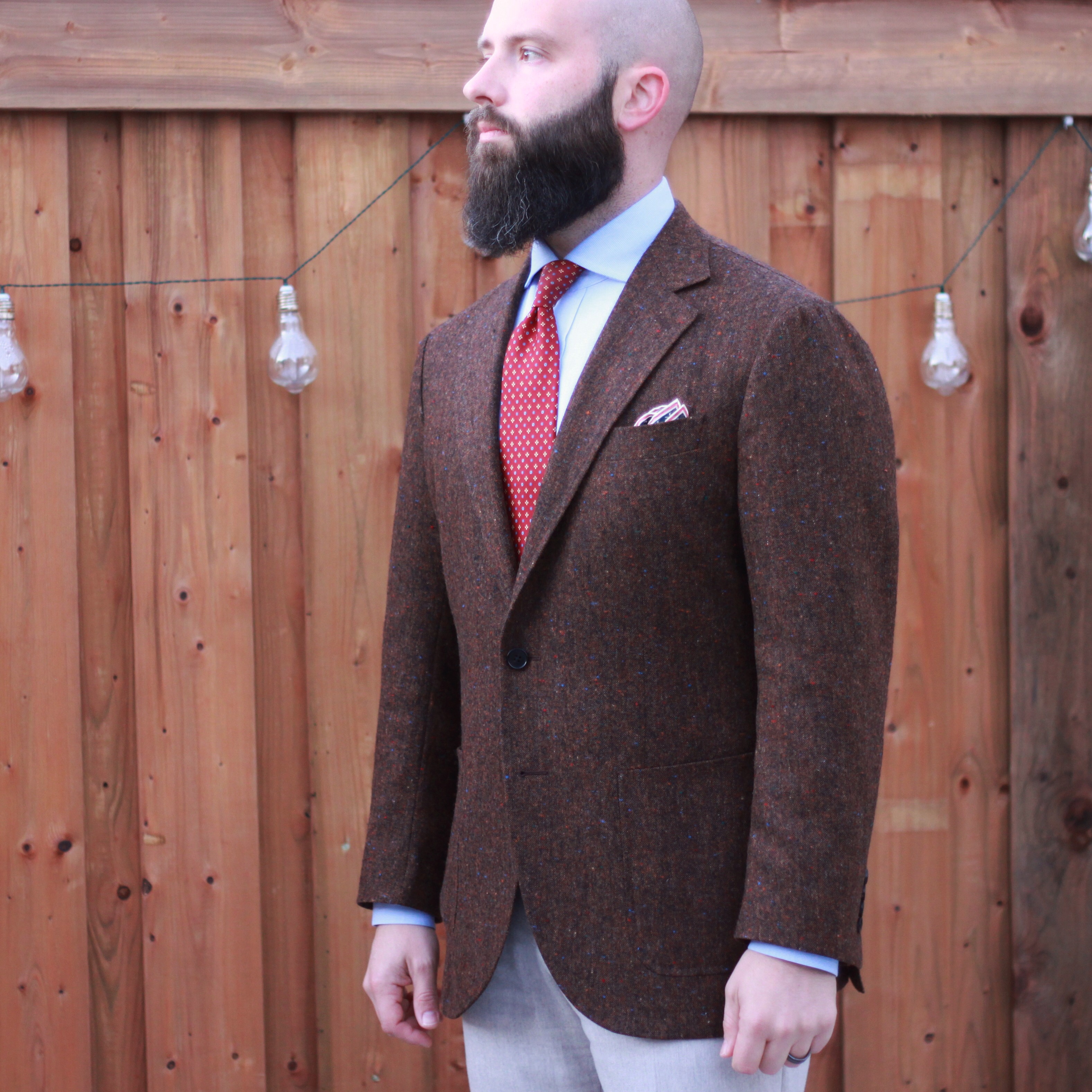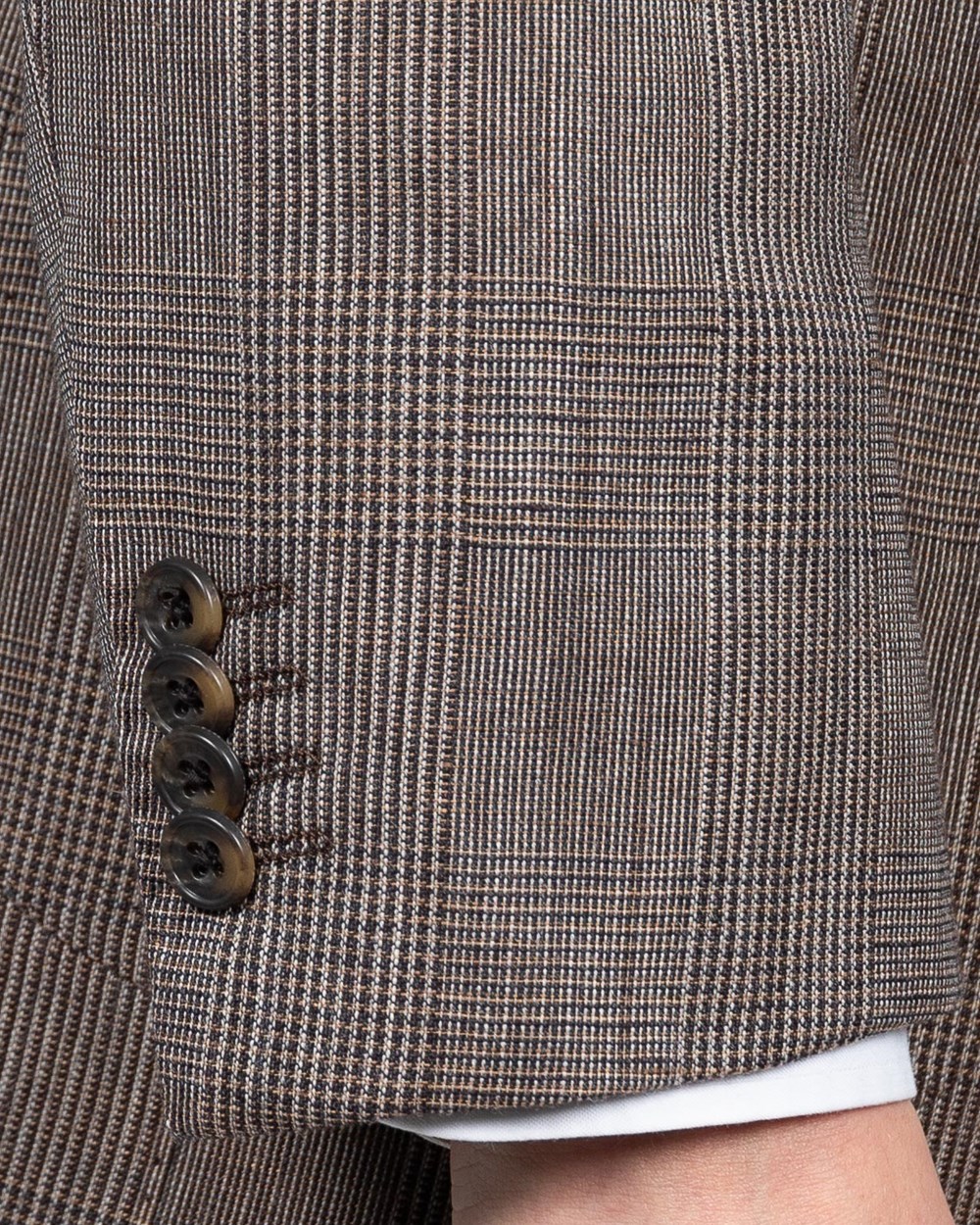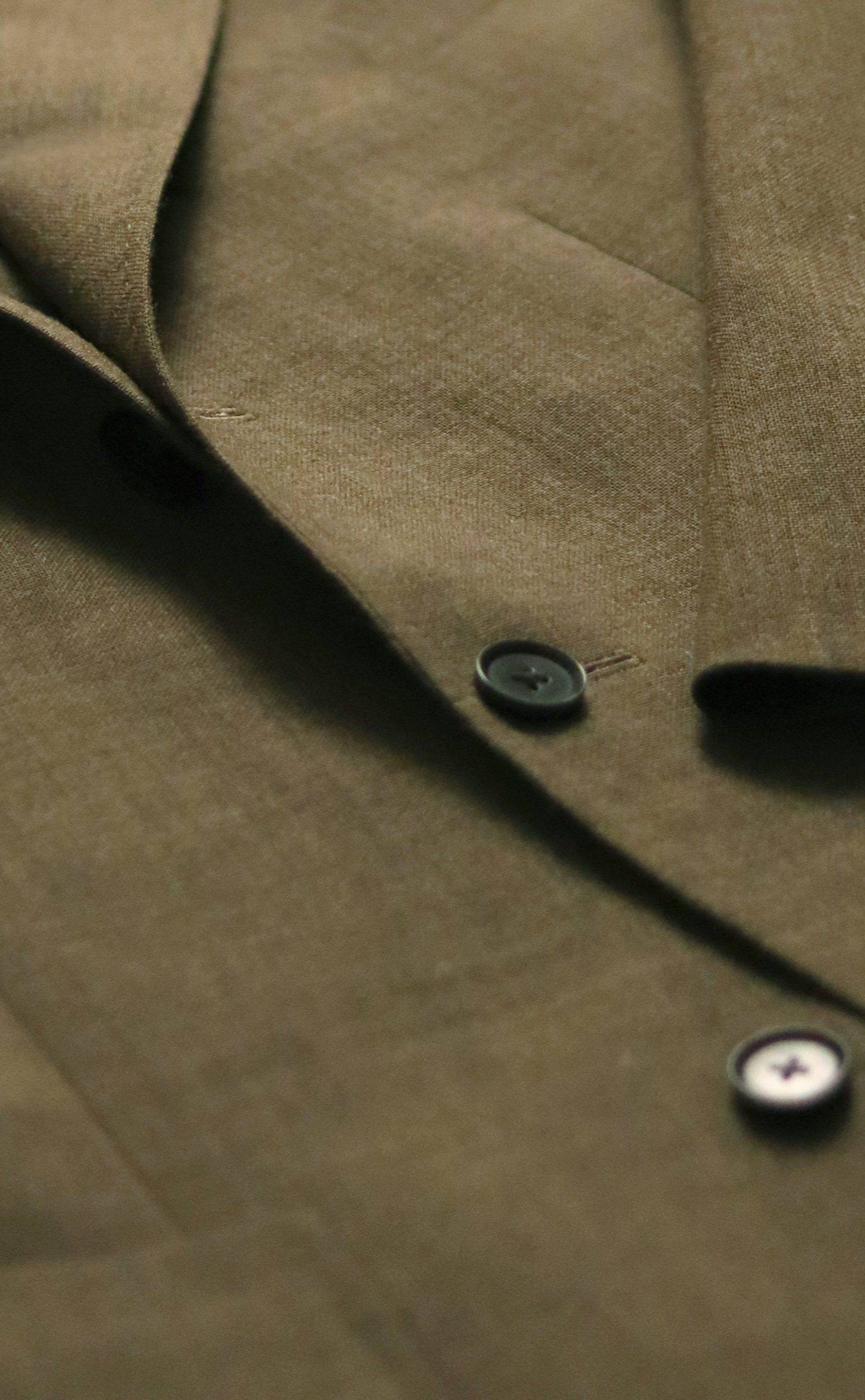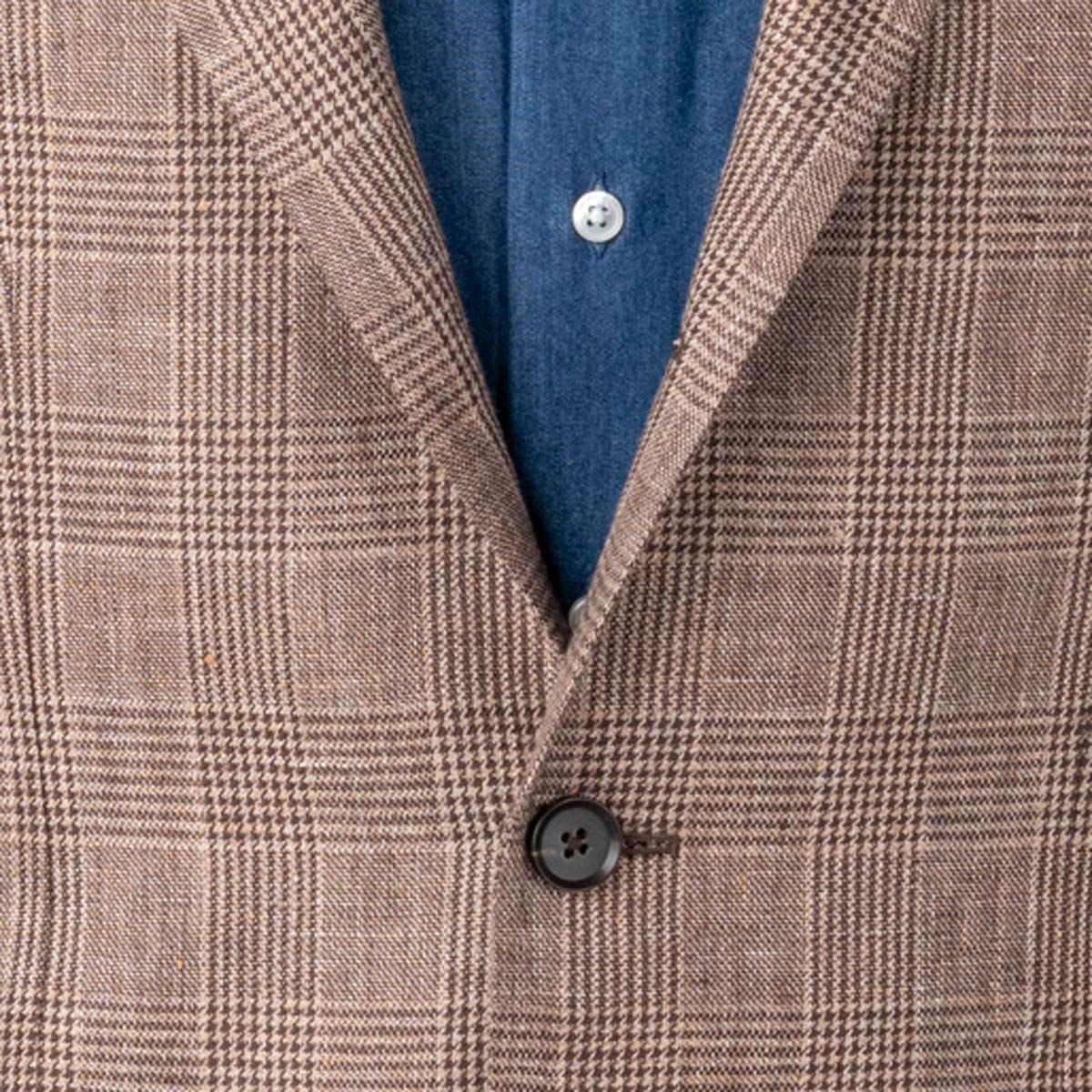Inspiration: How to Wear Red and Brown Together
Putting together an outfit using red (or burgundy) and brown can be a challenge. Like many challenging things, when you get it right the effort is worth it. There is something about this combination of colours that really resonates with me. It may not feel intuitive pulling off a true red and brown combo – it can look great, and I think because it requires additional thought and care, can be really unique.
Basic Colour Theory
Why is red and brown a pleasing combination? That’s a difficult question to answer, and is largely subjective. Let’s try anyways. If you have read about colour theory, there are a few basic ways to evaluate and group colour combinations.
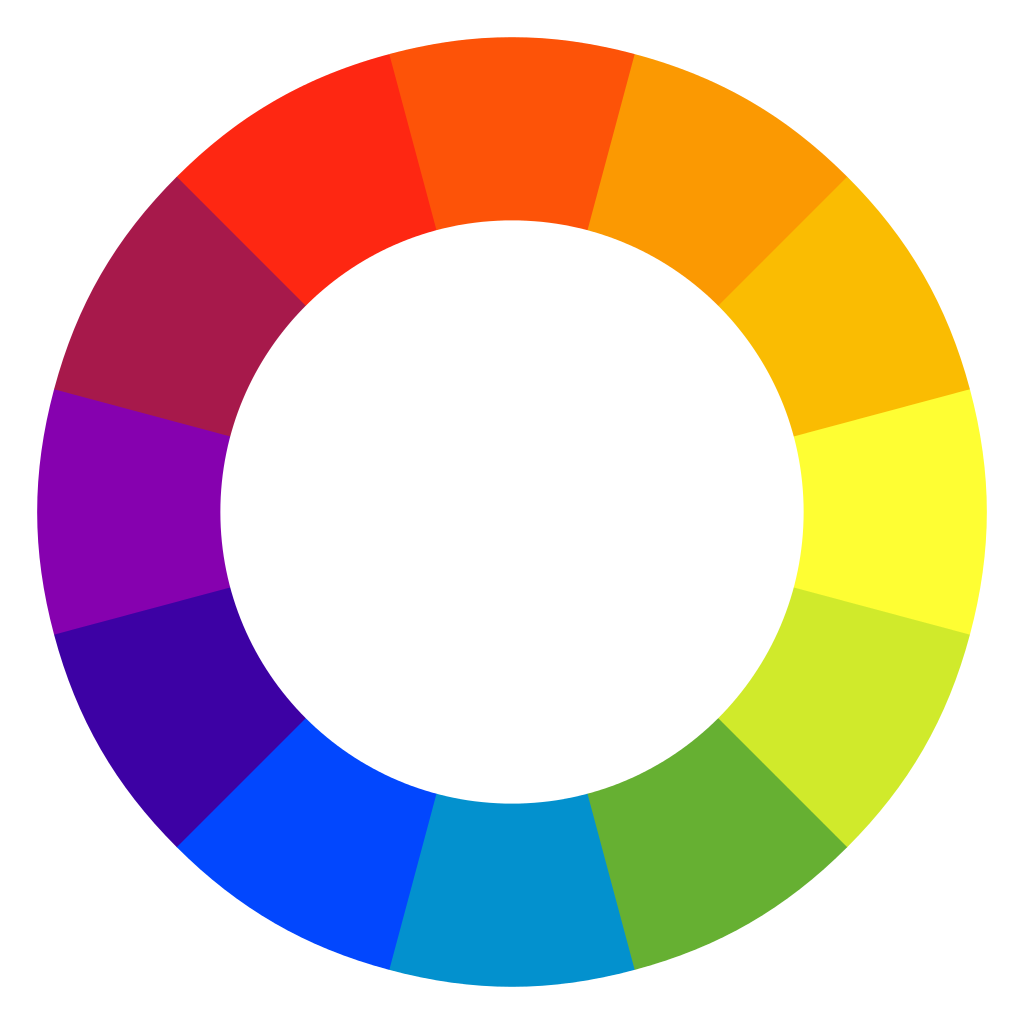
- Complimentary: colours that are opposite to each other on the wheel – i.e. blue and orange
- Analogous: colours that adjacent to each other on the wheel – i.e. different tones of green
- Monochromatic: differing shades or saturations of the same colour – i.e. red, dark red, merlot, etc
- Split Complimentary: use of the colours on either side of the complimentary colour – i.e. violet with teal and orange
- Triad: three equally spaced colours forming a triangle within the wheel – i.e. green, purple and orange
The Composition of Brown
So here’s where it gets tricky: Brown is often created by mixing red, yellow and blue (the primary colours), and the hue is influenced by the ratios of each. If it’s a mix of the three primary colours, how can you place it on the colour wheel relative to red? Brown can also be created by shading orange with black, which when combined with red could be considered analogous.
Red and Light Brown
This example shows how leveraging contrast in the colour pairing can really produce a pleasing combination. This red matka tie – rhubarb actually – isn’t particularly dark on its own, but against this summer tweed jacket leverages its saturation to create that contrast. I wish I had a full shot of this outfit, as looking at it now I’m questioning the choice of light grey trousers a little bit.
Here’s another example – light brown checked jacket from Cavour. This time, the contrast has been amped up further, but to me produces a similarly pleasing combination. A light wash, but saturated denim shirt, a burgundy silk knit tie from Oxford Rowe and a pair of dark brown fresco trousers all serve to ground the lighter brown of the sport coat.
The light brown jackets both offer lots of opportunity for contrast, which I think is key in order to have a cohesive outfit. It’s also good to include some cooler tones when pairing lots of warm ones.
Red and Brown
Lots of saturated colours here. Again, brown is our dominant choice taking up lots of visual real estate as the jacket. This tie is definitely a bold red, but the white pindots do temper the intensity. This shirt from Cavour in a heavy blue stripe really contrasts the warmer tones of the tie and jacket, which helps to provide both contrast and separation. Where the tie meets the jacket, there is still a little bit of that clash – just enough to make it interesting. There is some use of triad colour theory here, with the square being a deep burgundy base with blue and yellow highlights. The mid grey trousers ground the whole upper half, and don’t lean particularly warm or cool.
Overall this is balanced, if intense, and definitely a visually interesting outfit.
Burgundy and Brown
A more casual example this time featuring my honey brown denim jacket from Collaro. I’ve worn it here with a burgundy cardigan over a light blue striped OCBD and a pair of dark wash denim. Good balance of warm and cool here. The jeans and the cardigan are both dark and saturated, but their placement in the outfit does help to ground it. I would say the honey denim is fairly saturated as well, but being a lighter colour it feels pretty well balanced.
Next up is one I struggle with. Looking at the first photo, I really like the way the brown in the shirt and tie interact with the burgundy jacket. The pocket square here really brings it all together for me. But as we pull back and look at the fuller shots, I can’t help but feel something is lacking. There’s a good mix of contrast and saturation in this outfit, the burgundy is dominant, but the brown is a close second. Maybe that’s the problem here – because these two colours clash a bit, I might have used one too many brown elements. I feel that the shirt or tie could be replaced for a better outcome maybe.
So, how do you wear these colours together?
Well, trial and error is one way, but maybe that hasn’t worked out. Now you’ve found your way here and are looking for direction. I think there are a few key things to consider that will help you create a cohesive outfit:
- Proportions – ideally you want inequality in colour representation; one should be dominant.
- Contrast – you can use the “clash” more effectively if there is more contrast between the colours used.
- Saturation – similar to contrast, you want to consider the saturation of the individual pieces.
- Positioning – whether the red and brown are adjacent or will separated by something affects the whole.
Red and light brown seems to be an easier combination to attempt – specifically a light brown jacket or trousers with red accessories. Do the above considerations hold true? Let’s look back at that first outfit: Proportions – more brown than red; Contrast – deep red, light brown; Saturation – smaller piece (tie) is more saturated than the larger piece (jacket); Positioning – the shirt lies in between the red and brown pieces.
Let’s look at the outfit from the red and dark brown section. Proportions – more brown than red; Contrast – not so much between the tie and jacket, but the cold blue shirt in between adds some; Saturation – equal saturation from both red and brown, with a saturated blue; Positioning – the colour temperature differences between the tie and jacket vs the shirt really helps to separate them. Again, a successful combination.
Now, none of these insights are necessarily specific to pairing these two colours. They are broader approaches that should be applied to putting together any outfit, but it’s interesting to put them to the test with this specific situation.
Other outfits that may or may not support my case:
Some of these outfits work better than others. The first, a burgundy cardigan with brown flannel trousers… It’s interesting, but something feels off. Looking at the second shot, it seems much better. Mid grey or even charcoal trousers would have been best. The next two examples both use a brown tie with a burgundy cardigan, and honestly, I think both work well. I’ve limited the scale of the “clashing” tones, and surrounded them by generally neutral coloured jackets (grey and navy – yes, I think navy is neutral). The last is probably my favourite of the bunch, and it’s because it is the subtlest. Wearing my fawn Donegal jacket, which is just as much grey as brown, with an ecru shirt, burgundy flannel trousers and a charcoal tie. It’s got lots to appreciate, no clash, and would be unconventional in most eyes.
Final Thoughts
I’ve enjoyed actually writing about this – forcing myself to examine why I like red and brown so much. I hope through this post I’ve been able to answer some questions you might have about making these two colours play nice. Any further thoughts? Let me know down below!
-Colin
